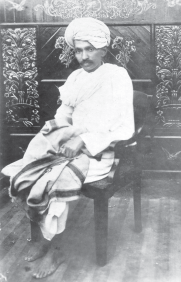
Some men changed their times...
One man changed the World for all times!
Comprehensive Website on the life and works of
Mahatma Gandhi
+91-23872061
+91-9022483828
info@mkgandhi.org

+91-23872061
+91-9022483828
info@mkgandhi.org
49. The Kheda Satyagraha |
 No breathing time was, however, in store for me. Hardly was the Ahmedabad mill-hands' strike over, when I had to plunge into the Kheda Satyagraha struggle. A condition approaching famine had arisen in the Kheda district owing to a widespread failure of crops, and the Patidars of Kheda were considering the question of getting the Government not to collect its land revenue for the year. Under the Land Revenue Rules, if the crop was four annas1 or under, the cultivators could claim full suspension of payment of revenue for the year. According to the official figures the crop was said to be over four annas. The contention of the cultivators, on the other hand, was that it was less than four annas. But the Government was in no mood to listen. At last all petitioning and prayer having failed, after taking counsel with co-workers, I advised the Patidars to resort to Satyagraha. In the initial stages, though the people exhibited much courage, the Government did not seem inclined to take strong action. But as the people's firmness showed no signs of wavering, the Government began coercion. The attachment officers sold people's cattle and seized whatever movables they could lay hands on. Penalty notices were served, and in some cases standing crops were attached. With a view to steeling the hearts of those who were frightened I advised the people, under the leadership of Shri Mohanlal Pandya, to remove the crop of onion from a field which had been, in my opinion, wrongly attached. This was a good opportunity for the people to learn a lesson in courting fines or imprisonment, which was the necessary consequence of such disobedience. For Shri Mohanlal Pandya it was a thing after his heart. So he volunteered to remove the onion crop from the field, and in this seven or eight friends joined him. It was impossible for the Government to leave them free. The arrest of Shri Mohanlal and his companions added to the people's enthusiasm. When the fear of jail disappears, repression puts heart into the people. A procession escorted the 'convicts' to jail, and on that day Shri Mohanlal Pandya earned from the people the honoured title of dungli chor (onion thief) which he enjoys to this day. I was looking for some graceful way of ending the struggle which would be acceptable to a Satyagrahi. Such a one appeared quite unexpectedly. The Mamlatdar of the Nadiad Taluka sent me word that, if well-to-do Patidars paid up, the poorer ones would be permitted not to pay. I asked for a written undertaking to that effect, which was given. I inquired of the Collector, who alone could give an undertaking in respect of the whole district, whether the Mamlatdar's undertaking was true for the whole district. He replied that orders in terms of the Mamlatdar's letter had been already issued. I was not aware of it, but if it was a fact, the people's pledge had been fulfilled. The pledge, it will be remembered, had the same thing for its object, and so we expressed ourselves satisfied with the orders. The Kheda Satyagraha marks the beginning of an awakening among the peasants of Gujarat, the beginning of their true political education. The lesson became firmly impressed on the public mind that the salvation of the people depends upon themselves, upon the capacity for suffering and sacrifice. Through the Kheda campaign Satyagraha took firm root in the soil of Gujarat. 1. i.e. four annas in the rupee (16 annas), or one-fourth the normal. |